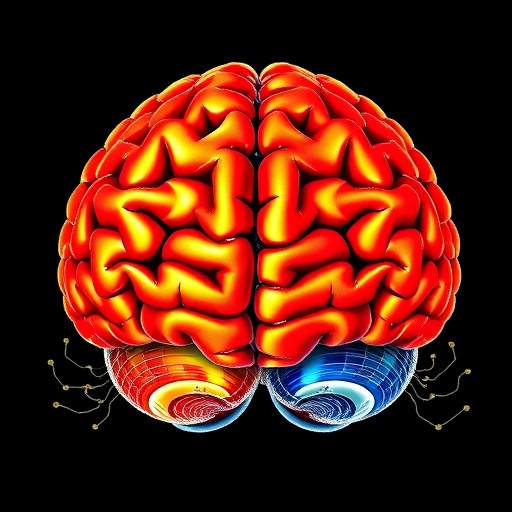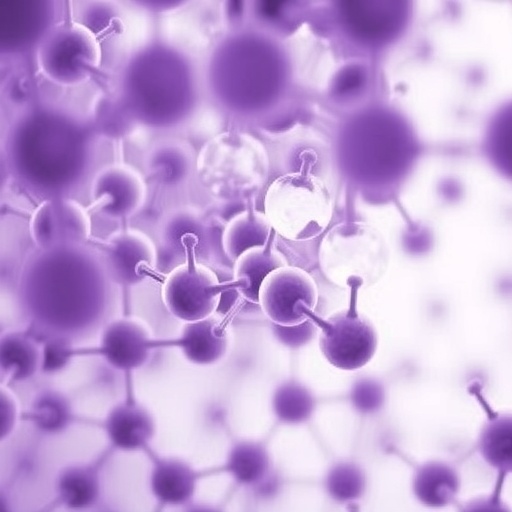In a groundbreaking study published on September 17, 2025, in the esteemed journal Neurology, researchers have uncovered compelling evidence linking frequent heading in amateur soccer players to subtle but significant changes within the brain’s structural microenvironment. This study, conducted by a team led by Dr. Michael L. Lipton of Columbia University, delves into the neurological consequences of repetitive head impacts sustained during sports, with a particular focus on the intricate white matter layers nested in the folds of the brain. Although the study stops short of establishing a direct causal relationship between soccer heading and brain injury, the associations it highlights raise critical questions about the long-term neurological health of athletes engaged in sports featuring repeated sub-concussive impacts.
The investigation involved a cohort of 429 athletes, including 352 amateur soccer players averaging 26 years of age and 77 individuals participating in non-contact sports, with a mean age of 23. By quantitatively estimating the frequency of headers over one year through detailed player surveys, researchers classified the soccer players into four groups. The highest exposure group averaged an astonishing 3,152 headers annually, while the lowest group averaged only 105. This distributed spectrum of heading intensity allowed for a granular analysis of how increased head impacts correlate with changes in brain microstructure.
Advanced neuroimaging techniques played a pivotal role in this research. Using diffusion magnetic resonance imaging (dMRI), the team meticulously examined the juxtacortical white matter—the critical layer of nerve fibers lying adjacent to the cerebral cortex’s gray matter, nestled within the cortical folds. This brain region facilitates essential communication pathways and is sensitive to mechanical stress. The technology hinges on tracking the directional movement of water molecules within this microstructure, as patterns of water diffusion illuminate the integrity and organization of brain tissue at a microscopic level.
Findings revealed that soccer players in the highest heading category displayed markedly disrupted water diffusion patterns in the juxtacortical white matter compared to both their lower-exposure peers and athletes from non-contact sports. These disruptions reflect compromised microstructural integrity, suggesting that frequent heading may induce damage or remodeling processes in the brain’s white matter architecture. Notably, as the number of header impacts increased, the organized flow of water molecules, typically indicative of healthy, intact neural pathways, deteriorated progressively.
Beyond imaging, cognitive performance assessments added a crucial functional dimension to the study. The researchers evaluated athletes’ thinking and memory skills using standardized neuropsychological tests. A compelling correlation emerged: greater disorganization in water molecule diffusion was linked with poorer scores on these cognitive measures. This suggests that microstructural changes in the brain’s white matter may underlie or contribute to subtle cognitive impairments, though it remains unclear whether these deficits are transient or could herald more permanent neurological consequences.
The orbitofrontal region of the brain, situated just above the eye sockets, was identified as a particularly vulnerable area. Disruptions detected within the folds of this region’s white matter appeared to partially mediate the relationship between repeated heading and diminished cognitive function. This finding is notable because the orbitofrontal cortex is involved in decision-making, emotional regulation, and memory processes, underscoring the relevance of targeted microstructural damage to real-world functional outcomes.
Dr. Lipton emphasized the delicate balance between the benefits and risks of sports participation. While physical activity has well-documented protective effects against cognitive decline and supports overall brain health, repetitive head impacts pose a paradoxical threat. The study illuminates how even non-concussive impacts—those that do not result in immediate symptoms—may accumulate to alter brain tissue in measurable ways. These insights are crucial as the scientific community grapples with defining thresholds for safe participation in contact sports and designing interventions to mitigate injury.
An important caveat of the research is the reliance on self-reported data to estimate the number of headers performed by individual athletes. Because memory and recall can be imperfect, these estimates introduce potential variability and bias, possibly underestimating or overestimating exposure. Nonetheless, the consistency of the observed associations across a substantial sample size and multiple analytic methods lends credibility to the conclusions.
This investigation was financially supported by prominent institutions, including the Dana Foundation David Mahoney Neuroimaging Program and the National Institute of Neurological Disorders and Stroke, reflecting the high priority placed on understanding sports-related brain trauma. The findings underscore an emerging consensus that microstructural integrity in juxtacortical white matter could serve as an early biomarker for brain injury, paving the way for future diagnostic tools and therapeutic strategies.
The implications of this research extend beyond the soccer field. Characterizing the brain’s response to repeated sub-concussive impacts informs not only athletic safety guidelines but also broader neuroscience fields, including the study of traumatic brain injury mechanisms and neurodegenerative disease progression. It prompts vital questions about how repetitive mechanical forces translate into cellular and molecular brain changes over time.
Ultimately, Dr. Lipton advocates for intensified research efforts to untangle the complex interplay between sports participation, brain microstructure, and cognitive outcomes. Advancing imaging modalities, refining exposure measurement, and longitudinal monitoring of athletes will be key to developing effective prevention and early detection methods. Such endeavors aim to safeguard the neurological health of millions of individuals who engage in soccer and similar contact sports, maintaining the benefits of physical activity while minimizing hidden risks.
As awareness grows regarding the nuanced effects of repetitive head trauma, stakeholders including athletes, coaches, clinicians, and policymakers must collaborate to incorporate scientific findings into practical frameworks. Protective equipment innovations, training modifications, and educational campaigns on safe heading techniques may emerge as tangible steps derived from studies like this. The intersection of cutting-edge neuroimaging and rigorous cognitive evaluation heralds a new frontier in athlete brain health research, with profound implications for public health and sports culture worldwide.
For those seeking further insights into concussion and brain injury, resources like the American Academy of Neurology’s Brain & Life platform offer accessible, expert-vetted information through multiple media forms. As the dialogue surrounding sports-related brain injury continues to evolve, integrating scientific discoveries with community awareness will be pivotal in shaping a safer future for all participants.
Subject of Research: Neurological effects of repetitive soccer heading on brain microstructure and cognition
Article Title: Frequent Soccer Heading Associated with Altered Brain Microstructure and Cognitive Function in Amateur Players
News Publication Date: September 17, 2025
Web References:
American Academy of Neurology: https://aan.com
Brain & Life: https://www.brainandlife.org/disorders/concussion
Neurology journal: http://www.neurology.org/
References:
Lipton ML, et al. “Heading frequency in amateur soccer players linked to microstructural changes in brain white matter.” Neurology. 2025 Sep 17.
Image Credits: Not provided
Keywords: Brain, Sports, White matter, Diffusion MRI, Soccer, Repetitive head impacts, Cognitive function, Neuroimaging
Tags: amateur soccer players brain health studyathlete neurological health risksbrain microenvironment changes in athletescorrelation between soccer headers and brain injuryDr. Michael L. Lipton researchimpact of repetitive head impacts in sportslong-term effects of sub-concussive impactsneurological consequences of soccer headingsoccer headers and brain healthstructural changes in brain foldsstudy on soccer players and brain structurewhite matter layers and brain injury





